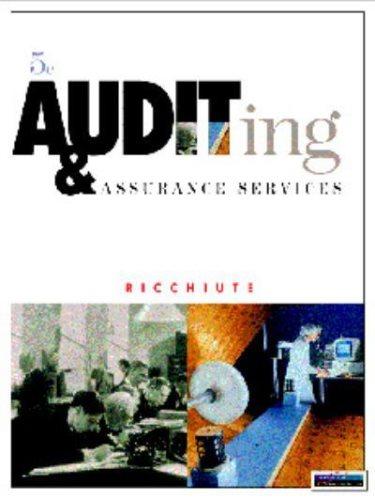From data available in the public press, a public accounting firm estimates that undetected management fraud may
Question:
From data available in the public press, a public accounting firm estimates that undetected management fraud may occur in 20 out of every 1,000 large, publicly traded companies and in 80 out of every 1,000 small, privately owned companies. But because the data may not be wholly reliable, the firm's executive committee decides to poll its regular and small business audit partners at the annual partners' meeting. Regular partners will be surveyed about publicly traded companies, and small business partners will be surveyed about privately owned companies. The survey results will be used to redesign the firm's audit planning checklist, which, in the executive committee's view, does not adequately address the firm's responsibility to detect and report management fraud.
At the annual partners' meeting, all regular audit partners are given a questionnaire which asks the following two questions:
• From your experience, do you believe that the incidence of management fraud in large public companies is:
a. More than 20 out of every 1,000 companies.
b. Less than 20 out of every 1,000 companies.
• What is your estimate of the percentage of large public companies involved in management fraud?
Small business partners were asked the same questions for private companies:
• From your experience, do you believe that the incidence of management fraud in small private companies is:
a. More than 80 out of every 1,000 companies.
b. Less than 80 out of every 1,000 companies.
• What is your estimate of the percentage of small private companies involved in management fraud?
Compiled responses from each partner group indicated the incidence of management fraud was estimated to be 0.025 (2.5 percent) for large public companies and 0.18 (18 percent) for small private companies.
Required:
1. For the survey described, which one or more of the cognitive heuristics—representativeness, availability, or anchoring—could bias the responding partners?
Discuss.
2. From the results indicated, have either or both of the partner groups apparently been biased by the heuristic(s) you identified in Question 1? Explain.
3. How could the firm have avoided any suspicion that heuristics might bias the survey results?
Step by Step Answer:






